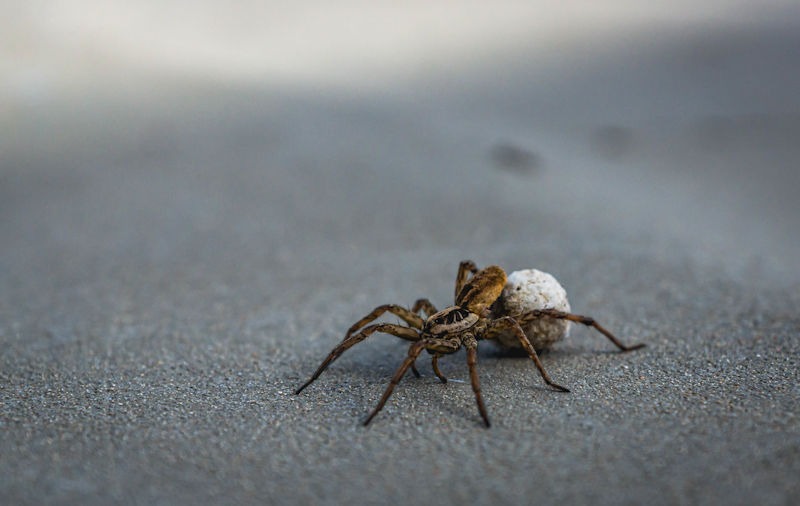Spiders are a common nuisance for homeowners in Southern Maryland and Northern Virginia. These eight-legged intruders can find their way into homes through a variety of entry points, causing distress and discomfort. Understanding how spiders enter homes and taking proactive measures to seal these entry points is crucial for effective spider prevention. By blocking access points, homeowners can significantly reduce the likelihood of spider infestations, creating a more comfortable and spider-free living environment.
Common Entry Points for Spiders
Spiders can enter homes through several common entry points. Identifying and addressing these access points is the first step in effective spider prevention. Here are some of the most common places where spiders can gain entry:
- Windows and Doors: Spiders often enter through gaps and cracks around windows and doors. Poorly sealed or damaged windows and doors provide easy access.
- Cracks in Walls and Foundations: Tiny cracks in walls, foundations, and floors can serve as entry points for spiders.
- Vents and Utility Openings: Unscreened vents and utility openings, such as those for plumbing or electrical systems, can allow spiders to enter your home.
- Attics and Basements: These areas often have numerous small openings that spiders can exploit.
Sealing Cracks and Gaps
Sealing cracks and gaps in your home is a critical step in preventing spiders from gaining entry. Here’s how to identify and seal these vulnerabilities effectively:
- Inspection: Conduct a thorough inspection of your home, paying close attention to the areas mentioned above. Look for visible cracks, gaps, and holes.
- Caulking: Use high-quality caulk to seal small cracks and gaps. Silicone-based caulks are particularly effective for sealing areas around windows and doors.
- Expanding Foam: For larger gaps and holes, expanding foam can provide a durable seal. This material is ideal for use in foundations and around utility openings.
- Weatherstripping: Apply weatherstripping around windows and doors to create a tight seal. This not only prevents spiders but also improves energy efficiency.
Window and Door Maintenance
Proper maintenance of windows and doors is essential for preventing spider entry. Here are some tips to ensure your windows and doors are effectively sealed:
- Regular Inspection: Check windows and doors for signs of wear and tear, such as cracks or gaps in the frames.
- Weather Stripping: Install weather stripping around the edges of windows and doors to create a secure seal. This helps keep spiders out and also improves insulation.
- Door Sweeps: Install door sweeps at the bottom of exterior doors. These barriers prevent spiders and other pests from slipping through the gap between the door and the floor.
- Repair and Replace: Promptly repair or replace damaged windows and doors. Broken glass, warped frames, and other issues can provide easy entry points for spiders.
Screening and Ventilation
Screens on windows and vents play a crucial role in spider prevention. Here’s how to maintain and repair screens to keep spiders out:
- Install Screens: Ensure all windows, doors, and vents are fitted with screens. Choose fine mesh screens to block even the smallest spiders.
- Repair Damage: Regularly inspect screens for tears, holes, or other damage. Repair or replace damaged screens promptly to maintain an effective barrier.
- Vent Covers: Install vent covers on exterior vents to prevent spiders from entering through these openings.
- Proper Ventilation: Ensure your home is properly ventilated to reduce the indoor humidity that can attract spiders.
Using Spider Repellents at Entry Points
In addition to sealing entry points, using spider repellents can provide an extra layer of protection. Here are some types of repellents and their application methods:
- Natural Repellents: Essential oils like peppermint, tea tree, and citrus can repel spiders. Mix a few drops of essential oil with water and spray around entry points.
- Chemical Repellents: Commercial spider repellents are available in sprays, powders, and granules. Follow the manufacturer’s instructions for safe and effective application.
- Barriers: Apply a barrier of diatomaceous earth around the perimeter of your home. This natural substance is safe for humans and pets but lethal to spiders.
- Regular Application: Reapply repellents regularly, especially after heavy rain or cleaning, to maintain their effectiveness.
Conclusion
Blocking access points is a crucial strategy for keeping spiders out of your home. By identifying and sealing common entry points, maintaining windows and doors, installing screens, and using repellents, homeowners in Southern Maryland and Northern Virginia can effectively prevent spider infestations. Regular inspection and maintenance are key to ensuring your home remains spider-free, providing peace of mind and a more comfortable living environment.
FAQ
Q: What materials are best for sealing cracks and gaps?
A: High-quality silicone-based caulks and expanding foam are effective for sealing cracks and gaps.
Q: How often should I inspect my home for entry points?
A: It’s advisable to inspect your home at least twice a year, ideally in spring and fall, to identify and address any new entry points.
Q: Are natural spider repellents effective?
A: Yes, essential oils like peppermint and citrus can be effective natural repellents when applied regularly around entry points.
Q: What is the best way to maintain window and door screens?
A: Regularly inspect screens for damage and repair or replace them as needed to ensure they provide an effective barrier against spiders.
NEED HELP?
If you live in Southern Maryland, or Northern Virginia
FIND YOUR SOLUTION HERE
People, Pet & Pollinator Safe! Pest control for people who care.

